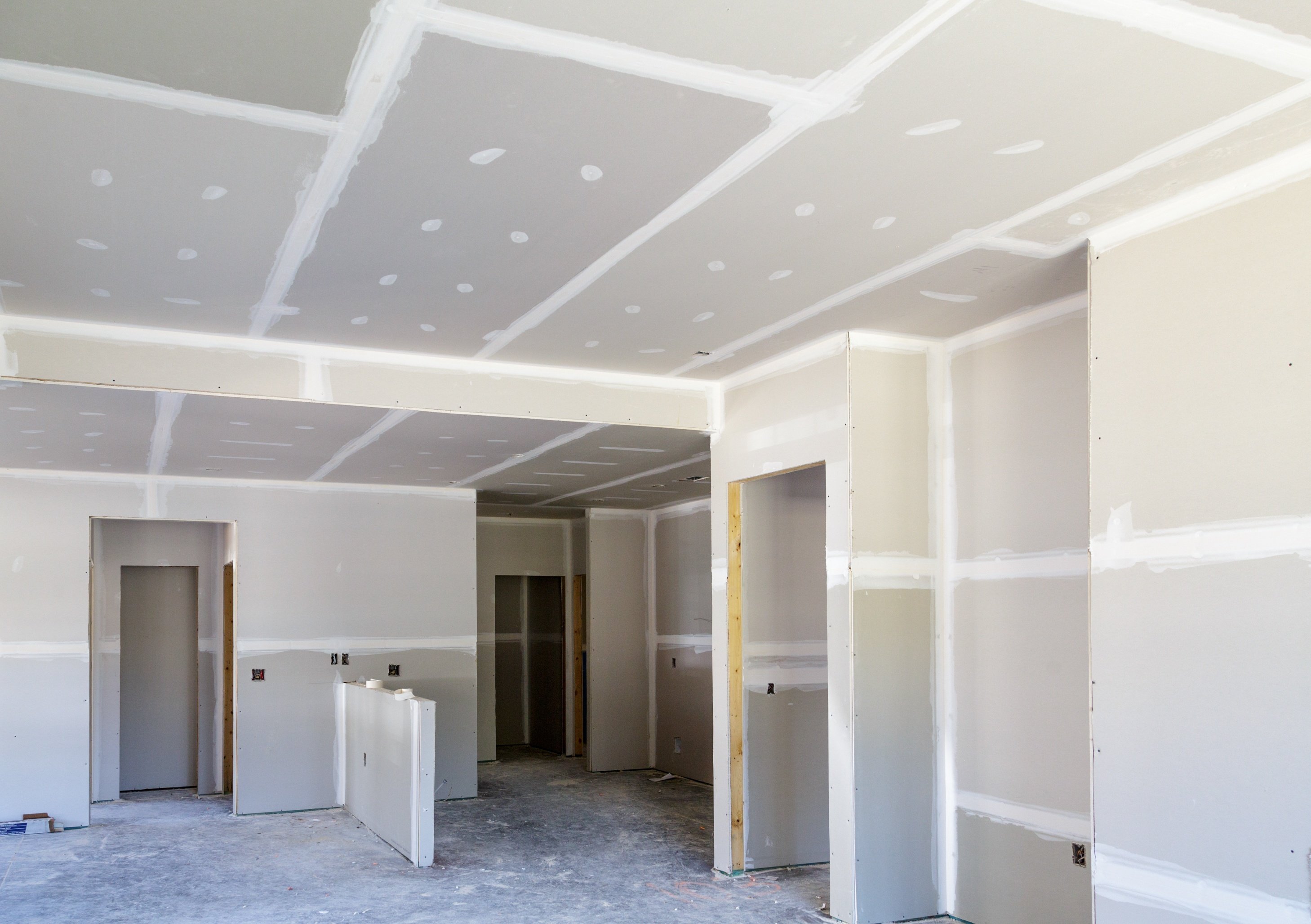How to Measure Moisture in Drywall

In a moisture-compromised structure, drywall is especially susceptible to damage from exposure to moisture. This is because gypsum, the material drywall is made of, is very sensitive to moisture. Drywall that has been allowed to get too wet can experience numerous problems, such as dissolution and mold growth.
So, how do you detect moisture in drywall? And, what is an acceptable amount of drywall moisture content (%MC)? To help you out, we here at Delmhorst Instrument Co. have assembled a short guide on how to measure moisture in drywall.
How to Measure Moisture in Drywall: What is a Safe Drywall Moisture Content?
Depending on the relative humidity (RH) of the environment in which the drywall is installed, drywall can be considered “moisture-compromised” when its %MC exceeds 1%.
Even greenboard, the "water-resistant" version of drywall, is basically done for once moisture gets past the green, water-resistant paper covering. It is a common misconception that the greenboard drywall itself is water-resistant; the reality is that it is primarily the paper coating that imparts the water resistance.
How to Measure Moisture in Drywall: Outward Signs of Moisture
Because drywall is so susceptible to damage from exposure to moisture, it is vital to check drywall throughout a structure for signs of excess moisture after any major water damage event.
If you suspect that there is excessive moisture in drywall throughout a structure, there are a couple obvious warning signs to watch out for:
-
Visual Inspection. While incredibly unscientific, sometimes a simple visual inspection can spot a severe excess of moisture in drywall. For example, drywall that has been moisture-compromised can begin to discolor or even crumble—symptoms that can be spotted with the naked eye. Unfortunately, by the time such damage becomes visible, the moisture damage may have spread far beyond the visible area of effect.
-
Odor. Sometimes, the first indication of a problem is a musty odor in moisture-affected areas of the building. However, this olfactory warning sign usually means that there is already a significant mold infestation present, one that may require the extensive gutting of the building’s materials to remediate.
The problem with the above two methods is that they are primarily useful only after moisture has gone unchecked in the drywall for a long while. By this time, the moisture problem may have spread to other materials.
To identify the presence of excess moisture in drywall before there are readily visible signs of damage, drywall moisture meters are your best bet. When it comes to using moisture meters for measuring moisture in drywall, you can use either a specially-made meter that uses the drywall scale, or you can use a meter that has a reference scale mode.
How to Measure Moisture Using a Moisture Meter with a Drywall Scale
A pin-type meter with a drywall scale setting, such as Delmhorst’s TechCheck PLUS 2-in-1 meter, can make measuring moisture in drywall easy by providing accurate, quantitative results. The TechCheck Plus, in particular, can measure %MC in drywall over the range of 0.1% to 6% moisture content, which is more than enough to verify whether the drywall is at risk (remember: drywall is considered moisture-compromised if it has more than 1% moisture content).
Another example of a moisture meter for drywall would be the BD-2100. This pin-type meter can take quantitative readings of gypsum moisture content between 0.2% to 50%—which can make it ideal for testing Gyp-Crete in addition to drywall.
With a drywall scale meter, accurately measuring moisture is as easy as pushing the pins of the meter into the drywall and taking a reading. The meter will provide an exact measurement that you can use to determine the moisture content of the drywall.
How to Measure Moisture Using a Moisture Meter with a Reference Scale
With a reference scale meter, you might not be able to get an exact reading of the drywall’s %MC, but you can determine whether moisture is present in the drywall.
First, take a reading in a sample of drywall that you know to be dry. This reading will probably be very low but should still serve as a reliable baseline. Then, start measuring moisture in the material you suspect to be moisture-compromised. Since these readings will be relative, and drywall has such a low tolerance for moisture, even a slight increase over the sample reading can be indicative of moisture in drywall.
Alternatively, if there is a significant level of moisture in the drywall, a reference scale reading can be used to quickly establish a pass/fail assessment. This is because any significant moisture indication in drywall usually means that the drywall is compromised.
When measuring moisture in drywall that you suspect might be moisture-compromised, testing multiple sites around the affected area is important. Identifying the extent of the affected area as soon as possible can be helpful for ensuring that the moisture problem can be appropriately remediated before it spreads.
Using moisture meters to detect moisture in drywall before visible signs of damage become apparent to the naked eye helps to limit the spread of damage. Waiting until you can see or smell signs of drywall damage allows problems such as mold to grow and spread, potentially affecting other building materials.
Learn more about how to measure moisture using moisture meters by getting a free copy of our restoration guide at the link below.
Subscribe to Our Blog
Post Related

3 Compelling Reasons Why You Need a Moisture Meter for Drywall


